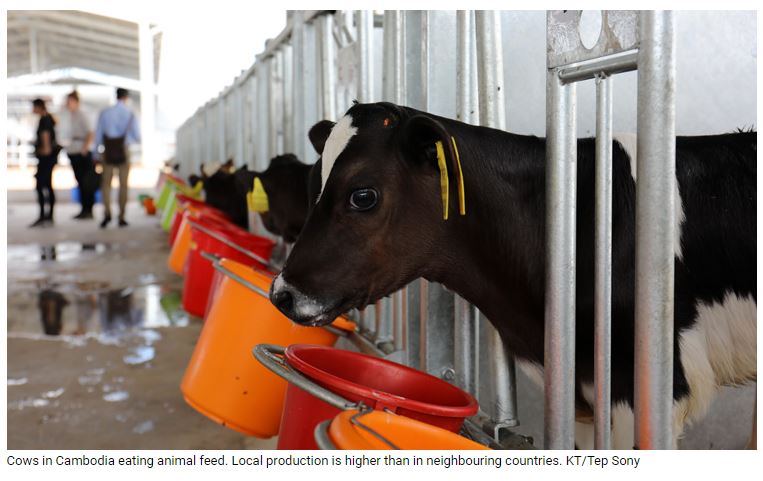Cambodia: Methods to cut costs of locally produced animal feed discussed
The government is seeking input from the private sector over the feasibility of more locally produced animal feed to reduce imports.
It will help small and medium industries while electricity prices remain high for the region, according to the Ministry of Agriculture, Forestry and Fisheries (MAFF).
MAFF Minister Veng Sakhon and Cham Prasidh, minister at the Ministry of Industry, Science, Technology and Innovation held a roundtable discussion on animal feed production for local industry with participation from all relevant institutions, including the private sector.
The ministries discussed the challenge farmers faced in the livestock and aquaculture chains in order to make their production more competitive with neighbouring countries that focus on enhancing the productivity of local animal feed production of sufficient quality and competitiveness, ensuring sufficient and good quality supply of meat and fish to the domestic market in a safe environment, participating in raising the living standards of farmers and expanding the investment potential to establish livestock farms and feed mills using local raw materials and creating local jobs.
Sakhon said that Cambodia currently imports almost 50 percent of animal feed because the local alternative costs more.
“We have collected input from the private sector and the Ministry of Industry will discuss more details with producers. We are looking into reducing the high cost of electricity, transportation costs and provide some tax incentives while restricting raw material imports with the purpose of promoting local use in the industry,” he said.
Cambodia imports both animal feeds and livestock related-products valued between $250 million to $300 million a year, according to Sakhon.
He said currently there 17 companies investing in animal feeds in Cambodia.
Prime Minister Hun Sen in July asked local investors to invest in animal feed processing factories to reduce imports while the government will provide some incentive for the investment.
He said the challenges would be the high cost of electricity. If the private sector does not have enough funds, it can join with the state so we can even create jobs and become self-reliant.
The meeting also examined Cambodia’s electricity prices, reducing production costs and the challenges faced by SMEs to promote domestic investment.
Srun Pov, president of the Cambodia Livestock Raisers Association said that currently Cambodia imports more than 30 percent of animal feed, mostly from Vietnam because local production is challenged by the high cost of production.
“Currently there are more than 10 animal feed producers in Cambodia and if those companies make use of their capacity, we have no need to import any feed,” he said.
“However, with the production costs being too high, the companies limit their output when they find it hard to compete with imported products.” he add.
Pov said because animal feed production consumes a huge amount of electricity with the price more than a half again higher compared with Vietnam and Thailand, local product would not be the first choice of farmers.
“When the price is higher, farmers will decide to choose the cheaper one that could make them spend less and earn more profits,” he said.
He added in order to promote farming commercially, the farmers still need to be more educated in farming and livestock technical and management skills.
“Farmers or livestock raisers always follow each other and they are not aware of the demand and supply side in the market,” he said.
“For example, when chickens fetch a good price, farmers turn to chicken-raising and give up on pigs and then the price of chickens goes down because of their oversupply.”
Source: https://www.khmertimeskh.com/50751913/methods-to-cut-costs-of-locally-produced-animal-feed-discussed/


 English
English




